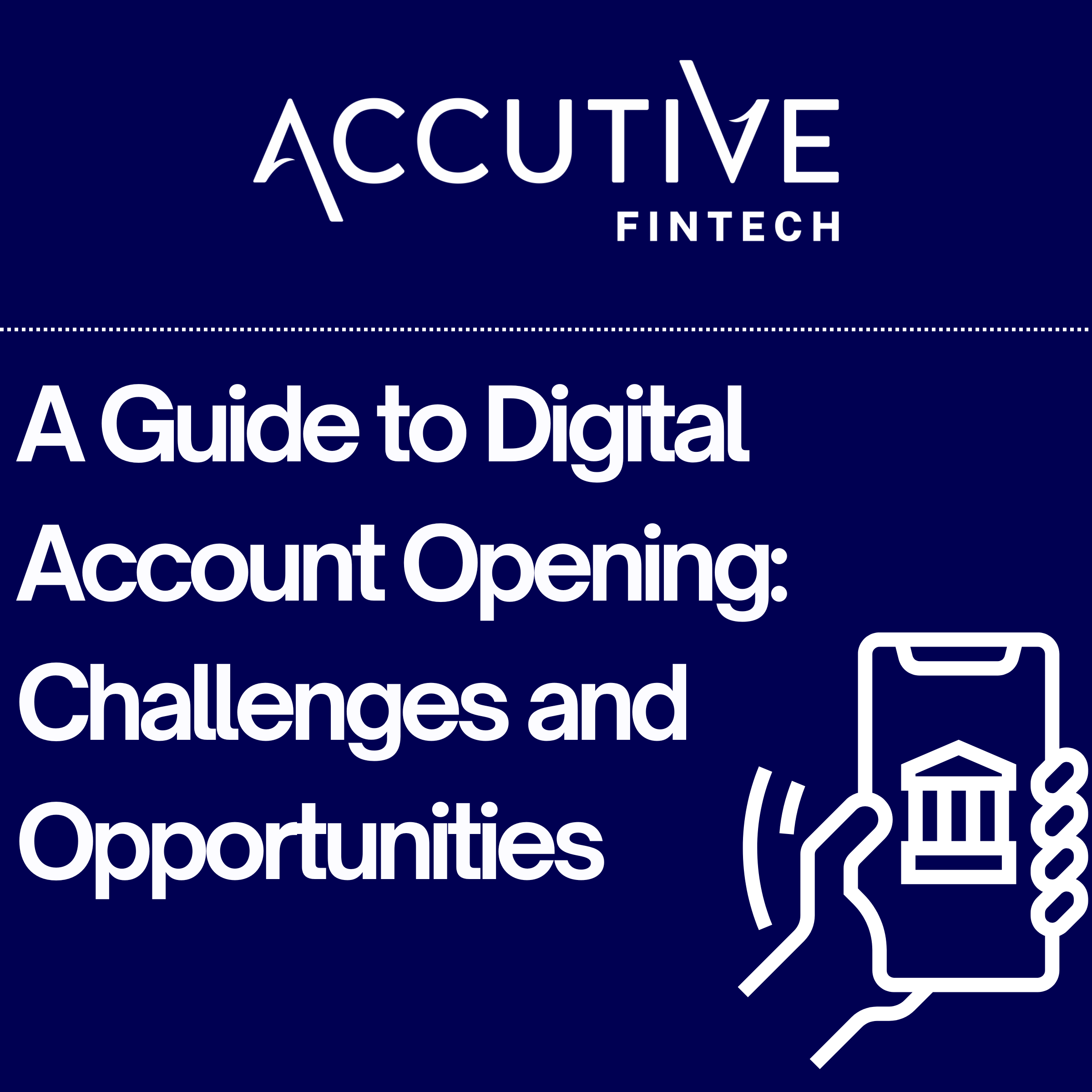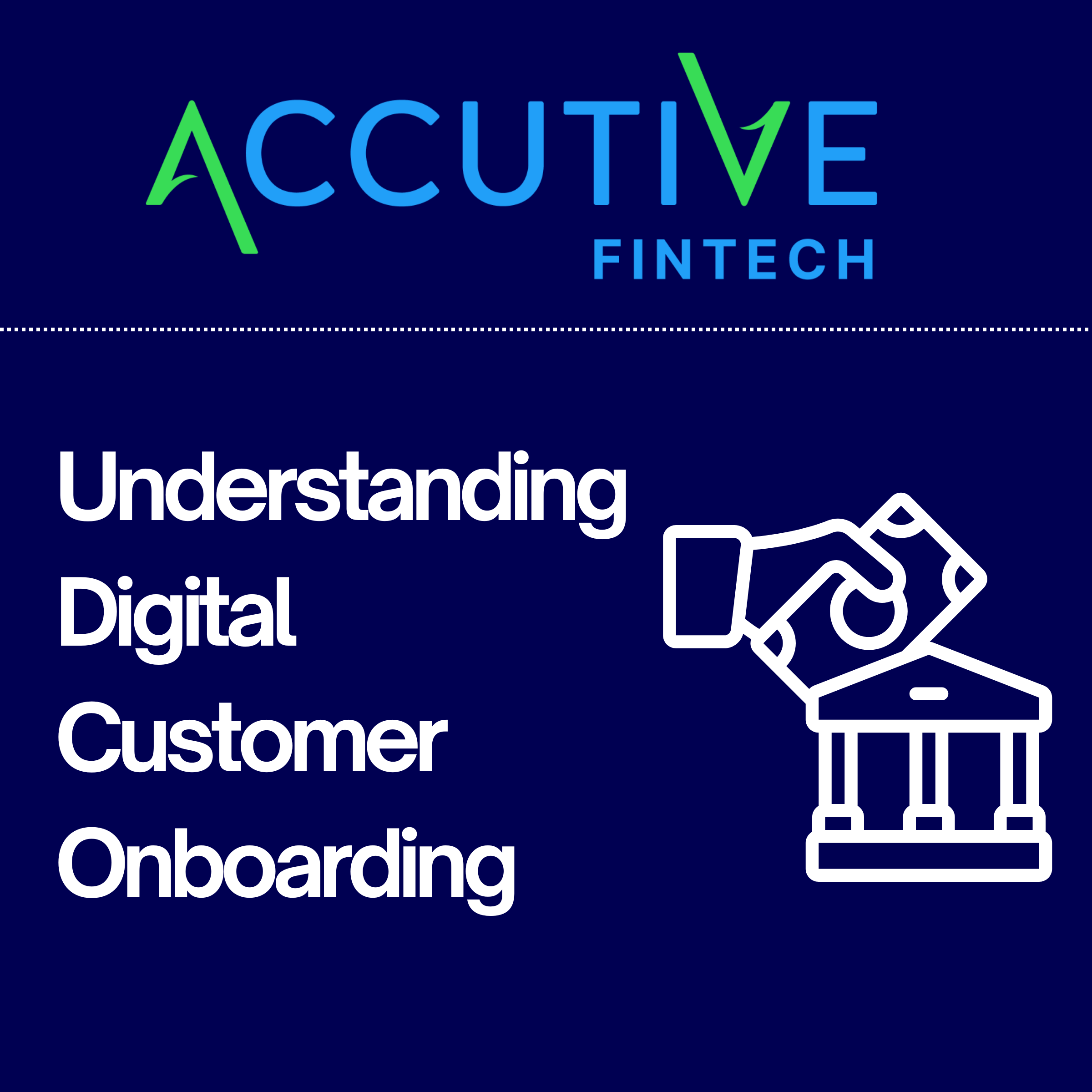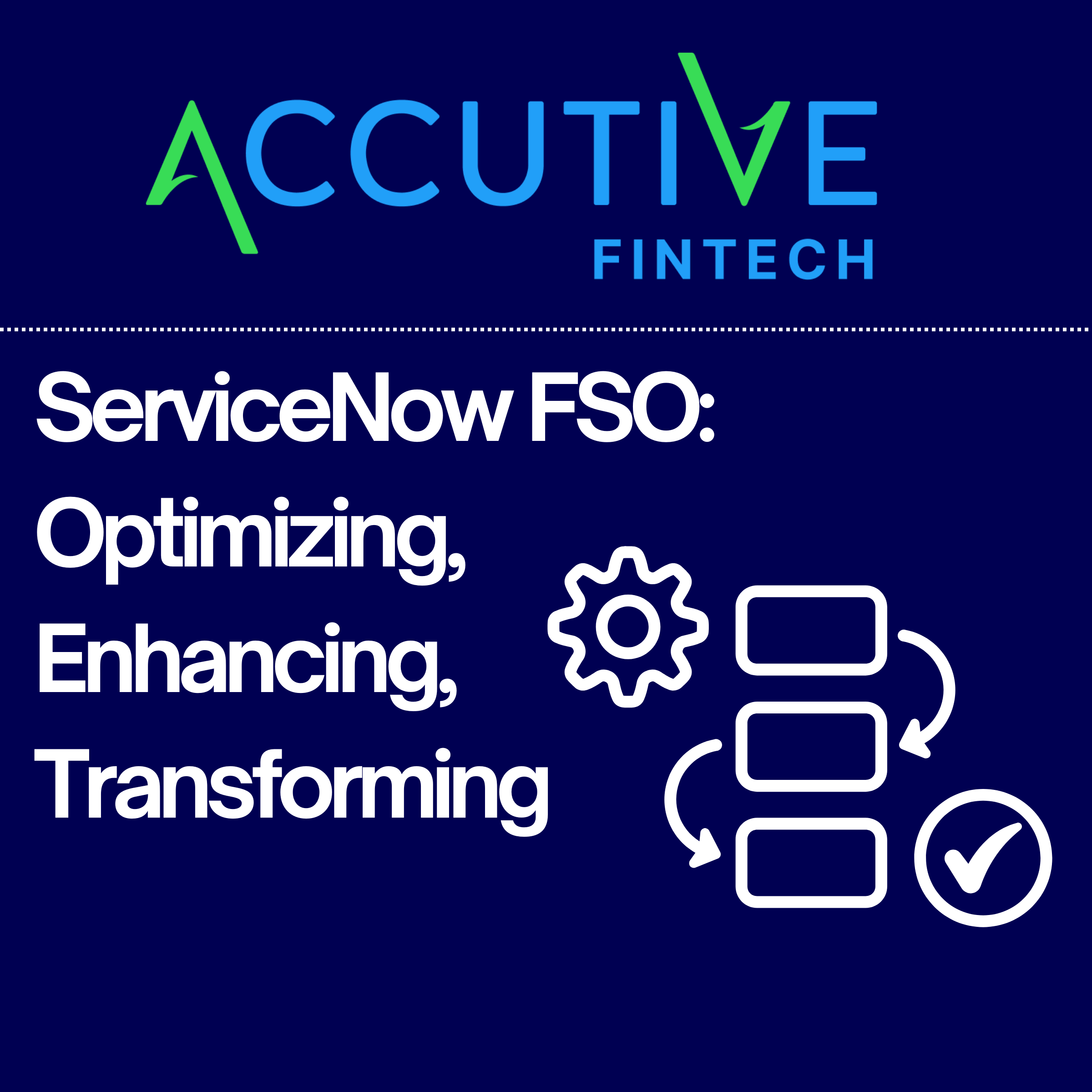Streamlined, secure, and user-friendly digital account opening experiences are no longer a luxury for financial institutions; they’re an expectation. Most financial institutions know that Digital Account Opening (DAO) enables their banks and credit unions to meet the basic customer or member expectation. Unfortunately, simply having a digital account opening solution is no longer sufficient – a cutting-edge solution is critical to remain competitive in the increasingly crowded market for new deposits and loans.
This blog explores the unique hurdles banks and credit unions face when implementing digital account opening systems, emerging trends shaping the industry heading into 2025, and strategies to create best-in-class digital account opening solutions. From integration challenges to curated customer experiences, this guide aims to empower banking technology leaders with actionable insights.
Challenges of Digital Account Opening in 2024
When working with financial institutions across the United States and Canada on their digital account opening and onboarding solutions, we find that the most common area of dissatisfaction is the application abandonment rate. One financial institution we worked with was experiencing a 70% abandonment rate before replacing their digital account opening solution with a more modern one based on the Temenos Journey Manager platform.
What Causes High Digital Account Opening Abandonment Rates?
High abandonment rates are a symptom of deeper issues within the digital account opening process. Here are some of the key culprits:
- Lengthy and Complex Applications: According to research, there is a direct correlation between the number of application steps and the abandonment rate. In fact, applications with over 20 steps see abandonment rates averaging over 60%. Customers expect a quick and easy process, ideally taking less than 10 minutes. Excessive steps, requests for unnecessary information, and confusing navigation all contribute to frustration and abandonment.
- Poor User Experience (UX): A clunky interface, lack of mobile responsiveness, unclear instructions, and technical glitches can all lead to a negative user experience, driving potential customers away.
- Lack of Trust and Security Concerns: Customers are wary of sharing sensitive information online. If the application process doesn’t feel secure or trustworthy, they may abandon it. Clear security messaging, trust badges, and a professional design can help alleviate these concerns.
- Limited Channel Options: Customers may prefer to start an application online and finish it in a branch, or vice versa. A lack of omnichannel capabilities can lead to abandoned applications if customers can’t seamlessly transition between channels.
- Insufficient Help and Support: If customers encounter problems or have questions during the application process, they need instantly available support. A lack of live chat, FAQs, or easily accessible contact information can lead to frustration and abandonment.
- Performance Issues: Slow loading times, application crashes, and other performance issues can quickly deter applicants. In today’s world, customers expect a smooth and responsive experience.
Deploying a New Digital Account Opening Solution Can Be Challenging
Beyond the challenges of optimizing the customer-facing application, financial institutions also face significant hurdles in deploying and integrating new DAO solutions:
- Integration Complexities: Integrating a new digital account opening (DAO) solution with existing core banking systems, KYC/AML platforms, and other third-party services can be a complex and time-consuming process. This often requires significant IT resources and expertise to ensure seamless data flow and avoid disruptions.
- Legacy System Limitations: Outdated legacy systems can hinder the implementation of modern DAO solutions. These systems may lack the flexibility and API capabilities needed to integrate with new technologies, requiring costly upgrades or workarounds.
- Data Migration Challenges: Migrating customer data from legacy systems to a new DAO solution can be a complex and risky undertaking. Ensuring data integrity, security, and compliance throughout the migration process is crucial.
- Cost and Resource Constraints: Implementing a new DAO solution can be a significant investment, requiring both financial and human resources. Financial institutions often struggle to find the balance between a top-tier account opening process and resource constraints. In particular, many credit unions and smaller banks face challenges in securing the necessary budget and expertise to successfully deploy and maintain a new system.
- Change Management: Introducing a new DAO solution often requires changes to internal processes and workflows. Effectively managing these changes and ensuring staff adoption is crucial for successful implementation. Additionally, it is important to provide guides for users to help them through the new account opening process with live on standby as required.
Unfortunately, many financial institutions cite these challenges as reasons to forego upgrading their digital account opening solution. As a result, the financial institution continues to experience poor performance with high abandonment rates and lose market share to competitors who offer a superior customer / member experience.
Trends Shaping the Digital Account Opening Landscape in 2025
Digital account opening technology continues to evolve and a number of key challenges and opportunities are on the horizon. The trends and challenges of 2024 are poised to accelerate with an even greater demand from consumers for digital experiences.
Emerging Technologies Enhancing Digital Account Opening
The following advancements promise to elevate DAO systems and reshape the customer onboarding journey:
- AI and Automation: Artificial intelligence and automation are transforming DAO by streamlining processes, enhancing decision-making, and personalizing the customer experience.
- Automated Identity Verification: AI-powered solutions can verify identities in real-time using facial recognition, document scanning, and knowledge-based authentication, reducing fraud and improving accuracy.
- Intelligent Fraud Detection: Machine learning algorithms can analyze vast amounts of data to detect and prevent fraudulent account opening attempts, protecting both the institution and the customer.
- AI-driven Chatbots: Sophisticated chatbots can provide instant assistance to guide users through the application process, answer questions, and resolve issues, enhancing customer satisfaction and reducing the need for human intervention. A Juniper Research study predicts that chatbot interactions in banking will reach 726 billion by 2023, highlighting their growing importance in customer service.
- Predictive Analytics for Risk Assessment: AI can analyze customer data to assess risk and automate decision-making for account approvals and credit limit assignments.
- Omnichannel Onboarding Experiences: Customers increasingly desire flexibility—starting an application on one device and completing it on another. A 2023 study by FIS reveals that 72% of customers value consistent experiences across channels, driving demand for omnichannel solutions. This includes offering seamless transitions between online, mobile, and in-branch channels, ensuring a consistent and personalized experience regardless of how the customer chooses to interact with the institution. One of the key strengths of the Temenos Journey Manager platform are its omnichannel customer account opening journeys.
- Data-Driven Personalization: By leveraging customer data insights, institutions can personalize the onboarding journey to improve conversion rates and customer satisfaction. This includes:
- Tailored Workflows: Adapting the application process based on the customer’s profile, needs, and risk level.
- Personalized Product Recommendations: Offering relevant products and services based on the customer’s financial situation and goals.
- Customized Communication: Delivering targeted messages and offers through the customer’s preferred channels.
- Accessibility: Designing DAO solutions with accessibility in mind is crucial to ensure inclusivity and provide a positive experience for all users. This includes adhering to accessibility guidelines, such as WCAG (Web Content Accessibility Guidelines), to accommodate users with disabilities. Features like screen reader compatibility, keyboard navigation, and alternative text for images are essential for creating an inclusive onboarding experience.
What is happening with open banking?
Open banking is poised to reshape the financial landscape in both the United States and Canada, but its progress has been slower than anticipated. While it holds immense potential to increase competition and transform the digital account opening process, regulatory hurdles and implementation delays have tempered the initial excitement.
In the United States, the Consumer Financial Protection Bureau (CFPB) released its long-awaited open banking rule in October 2024. This rule aims to give consumers greater control over their financial data and promote innovation by requiring financial institutions to share data with authorized third parties through secure APIs. However, the rule’s implementation is expected to be gradual, and its final form may be subject to revisions under the incoming administration.
Similarly, Canada’s progress on open banking has faced delays. The federal government has missed several self-imposed deadlines for finalizing its open banking framework. While the government insists that they remain committed to open banking, the timeline for implementation remains uncertain.
Despite these challenges, open banking holds significant promise for transforming the digital account opening process in several key ways:
- Pre-Filled Forms: APIs can automatically populate application forms with existing customer data from other financial institutions, reducing manual entry, minimizing errors, and simplifying the process for customers. This can significantly improve the user experience and reduce abandonment rates.
- Real-Time Income Verification: Open banking APIs can streamline income and employment verification by enabling secure access to customer data held by other banks and payroll providers. This can accelerate the approval process, reduce reliance on traditional documentation, and improve the customer experience.
- Enhanced Product Recommendations: By accessing a broader range of customer financial data, institutions can leverage AI and machine learning to offer more personalized product recommendations during the account opening process. This can lead to increased cross-selling opportunities and improved customer satisfaction.
- Streamlined KYC/AML Compliance: Open banking can facilitate KYC/AML compliance by enabling secure access to customer data from trusted sources. This can reduce the need for manual verification, improve accuracy, and streamline the onboarding process.
- Faster and More Efficient Onboarding: By automating data retrieval and verification through APIs, open banking can significantly accelerate the account opening process, reducing time-to-decision and improving customer satisfaction.
What are the benefits of a modern digital account opening solution?
When implemented effectively, a top digital accounting solution offers transformational benefits that extend across the entire organization, impacting customer acquisition, operational efficiency, customer relationships, and regulatory compliance. Here’s a closer look at these benefits:
- Boosted Customer Acquisition: A smoother, faster, and more intuitive application process vastly reduces abandonment rates. By minimizing friction and providing a user-friendly experience, institutions can attract and onboard more customers. This leads to increased market share and account growth. For example, features like pre-filled forms, automated document uploads, and real-time approvals can significantly improve the customer experience and reduce the likelihood of abandonment.
- Improved Operational Efficiency: Automation reduces reliance on manual processes, cutting operational costs and allowing staff to focus on higher-value tasks. This includes automating tasks such as data entry, identity verification, and document processing. By streamlining these processes, institutions can reduce the need for manual intervention, minimize errors, and free up staff to focus on more strategic initiatives, such as customer relationship management and business development.
- Customer / Member Loyalty from Day 1: Frictionless, personalized onboarding enhances the overall customer experience, fostering loyalty and trust. By providing a seamless and personalized onboarding journey, institutions can make a positive first impression and build stronger relationships with their customers. This can lead to increased customer lifetime value and advocacy. Personalization can include tailoring the application process to the customer’s needs, offering relevant product recommendations, and providing proactive support.
- Regulatory Compliance: Advanced fraud detection and compliance tools ensure adherence to industry standards and regulations. This includes features such as KYC/AML checks, identity verification, and fraud scoring. By automating these processes and integrating with compliance databases, institutions can reduce risk, avoid penalties, and maintain a strong reputation for security and trustworthiness.
- Enhanced Brand Image: A modern DAO solution can enhance an institution’s brand image by projecting an image of innovation and customer-centricity. This can be particularly important for attracting younger, digitally savvy customers who expect a seamless and modern digital experience.
- Increased Accessibility: A well-designed DAO solution prioritizes accessibility, ensuring that all customers, including those with disabilities, can easily open accounts and access financial services. This promotes inclusivity and demonstrates the institution’s commitment to serving a diverse customer base.
- Data-Driven Insights: The top digital account opening solutions, such as Journey Manager, have built-in analytics tools that provide valuable data and insights into customer behavior and preferences. This data can be used to optimize the onboarding process, identify areas for improvement, and develop more targeted marketing campaigns.
Building an Exceptional Digital Account Opening Experience
Building a best-in-class DAO solution requires a structured approach. Typically, our new implementation projects involve the following steps:
- Requirements Gathering: Clearly define your business objectives, target audience, and desired features for your digital account opening solution.
- Assessment of Current Solution: Evaluate your existing account opening process and technology to identify strengths, weaknesses, and areas for improvement. Conduct a gap analysis between your requirements and your existing solution to determine what enhancements are required.
- Platform Decision: Based on the findings of the assessment, decide whether to enhance your existing platform or choose a new solution based on your needs and budget.
- Discovery: Finalize requirements, conduct a detailed analysis, and develop a comprehensive project plan with a realistic timeline and budget estimate.
- Resource Allocation: Assemble a team of certified experts with a balanced QA-to-developer ratio to minimize defects and ensure high-quality development.
- Solution Design: Design the user interface, workflows, and integrations to meet your specific requirements and create a seamless and intuitive customer experience.
- Agile Development: Utilize an agile development methodology to build the solution iteratively, allowing for flexibility and continuous feedback.
- Quality First Approach: Implement a holistic defect minimization process, such as the Quality First Approach, throughout the development lifecycle to minimize defects and ensure a high-quality solution.
- Deployment: Deploy the solution to your production environment, ensuring a smooth transition and minimal disruption to business operations.
- Ongoing Enhancements: Continuously monitor and analyze performance data to identify areas for improvement and implement ongoing enhancements to optimize the customer experience and adapt to evolving needs and market trends.
Avoid Compromises with Best-in-Class Digital Account Opening
Exceptional digital experiences are critical for remaining competitive in a fast changing financial services landscape. To help financial institutions overcome the challenges of upgrading their digital account opening process, Accutive FinTech partnered with Temenos to create the Accutive Springboard for Journey Manager. This solution, delivered with Accutive’s Quality First Approach, unlocks a streamlined and efficient onboarding experience at an affordable price point. By significantly reducing project timelines and total cost of ownership, exceptional digital account opening is accessible to more financial institutions.
Here’s what sets the Accutive Springboard apart:
- Pre-Built Connectors to Core Banking and Beyond: Accutive Springboard features pre-configured connectors to major core banking systems, including Jack Henry, OSI, FIS, Fiserv, Temenos, Corelation and more.
- Streamlined Workflows: Simplified workflows that are integrated with leading KYC/IDV solutions such as Prove, Alloy and HID IDV.
- Accessibility for All: Accutive FinTech designs digital experiences with accessibility in mind, ensuring that no one is left behind. Accutive Springboard provides fully compliant and accessible digital account opening.
- Rapid Deployment: Unlike traditional solutions that take months, Accutive Springboard can be developed and deployed in as little as 6 weeks.
- Customizable, Scalable Platform: Although Accutive Springboard provides an excellent digital account opening process out of the box, the platform can be tailored to meet your specific needs and brand preferences. Accutive Springboard is also scalable and designed to grow with your needs.
To learn more about how you can avoid compromises with a best-in-class onboarding experience at an affordable price point, watch our joint webinar with Temenos.








